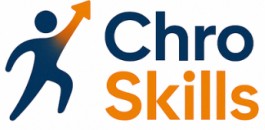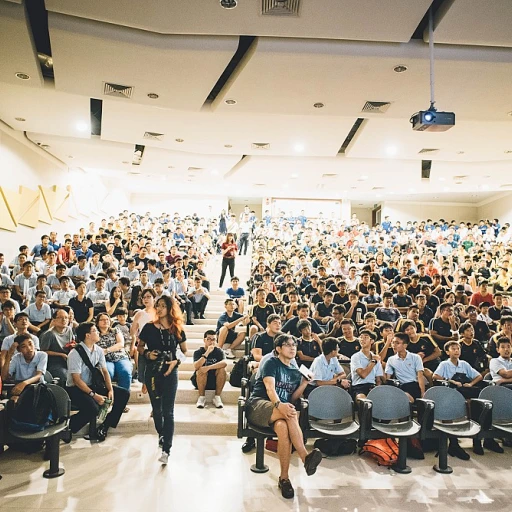
Understanding Composable Technology
Defining the Foundations of Composable Technology
Composable technology has emerged as a transformative approach in the digital landscape, emphasizing the modular assembly of software solutions. This groundbreaking approach employs components like microservices, cloud computing, and headless architectures to create adaptable systems. One of the core principles of composable technology is the separation of the backend from user interfaces, allowing headless CMS platforms to build flexible content management systems. By leveraging these systems, businesses can innovate quicker and adapt their user experience according to changing customer demands. Central to this technology is its reliance on an architecture composed of independent yet interconnected software components. These components, or building blocks, can be combined to execute specific business functions, thereby facilitating a seamless digital transformation. This structure lends itself well to a microservices architecture, where each microservice represents a distinct application element within the broader tech stack. Businesses that adopt composable technology often reap significant benefits. This includes enhanced agility, as composable applications allow easier updates and integration of new software components without disrupting existing operations. With the growing importance of customer data, composable architectures also streamline data processing through services such as Customer Data Platforms (CDP) and other cloud-based platforms. As organizations continue to shift away from traditional software solutions, embracing composable commerce models has become vital. This enables companies to craft personalized customer experiences with more agility, thanks to headless applications and cloud-based services. Ultimately, this technological paradigm not only supports a dynamic business model but it also lays the groundwork for innovative HR leadership strategies. To delve deeper into how composable technology can enhance HR leadership capabilities, read our insights on harnessing technology for HR leadership.Key Skills for a Chief Human Resources Officer
Essential Skills for Leading in a Composable World
As technology continually reshapes the business landscape, Chief Human Resources Officers (CHROs) must adeptly navigate the intersection of human resource management and cutting-edge technology. Embracing composable technology requires a unique set of skills that goes beyond conventional HR practices. Here's a closer look at the competencies crucial for a CHRO leading in a composable environment.
- Strategic Vision and Innovation: The ability to foreseen the potential of composable business models rests heavily on a strategic vision that incorporates digital transformation into HR strategies. A forward-looking CHRO must envision how composable architecture and microservices can enhance user experience while driving organizational effectiveness.
- Technological Acumen: Familiarity with cloud computing, headless CMS, and composable applications is essential. CHROs should understand how these technologies form the backbone of a composable tech stack, enabling agile adaptation to changing business needs. Combing through processes using software solutions rooted in composable technology provides a tactical advantage.
- Data-Driven Decision Making: Utilizing customer data platforms (CDPs) and a wide array of data applications, CHROs must harness data for informed decision-making. The ability to synthesize information from diverse software components is key to leveraging customer insights and improving digital platforms' user experience.
- Agility in Leadership: Leading a composable business requires adaptability and responsiveness to emerging trends. As the architecture shifts from traditional monolithic systems to microservices, CHROs need to guide their teams in reimagining the possibilities within their human resources strategy.
- Collaborative Mindset: Fostering a collaborative environment where HR professionals, tech teams, and business leaders work together is vital. By encouraging collaboration, CHROs can seamlessly integrate composable components into the existing business model, ensuring that all parts move in harmony.
The evolving role of a CHRO demands constant upskilling and a profound understanding of how composable technology impacts human resource dynamics. The ability to build a flexible, resilient HR framework rests in mastering these competencies, setting the stage for innovative solutions that benefit both the organization and its people. Explore more about how digital HR leadership can revolutionize your business strategies at digital salesboard insights.
Integrating Composable Technology in HR Strategies
Modernizing HR Strategies with Composable Approaches
Integrating composable technology into HR strategies marks a transformative shift from traditional systems to more agile, adaptable solutions. By leveraging a composable architecture, HR leaders can tailor their digital solutions to fit specific business needs, enhancing efficiency and responsiveness. Here's how:- Adopting Composable Building Blocks: Instead of relying on monolithic applications, HR teams can use software components, such as microservices, to build a flexible tech stack. This approach allows for seamless integration with existing systems, ensuring that new software solutions enhance, rather than disrupt, business operations.
- Enhancing User Experience: A composable strategy offers a more personalized user experience by integrating customer data through platforms like Customer Data Platforms (CDP). This integration ensures data-driven decisions, enhancing both employee satisfaction and customer service.
- Leveraging Cloud Computing: The cloud is a cornerstone in composable business strategies, allowing HR departments to access scalable services rapidly. This scalability supports dynamic business environments, enabling companies to adapt their staffing solutions in real time.
- Utilizing Headless CMS: By decoupling the front-end and back-end of traditional CMS systems, HR can deliver tailored content management solutions that align with specific departmental needs, ensuring more effective communication and engagement.
- Embracing Digital Transformation: The transition to composable tech is emblematic of a broader digital transformation within HR departments. This shift not only modernizes the infrastructure but also fosters a business model that prioritizes adaptability and innovation, ready to tackle future trends in the industry.
Enhancing Decision-Making with Composable Technology
Enhancing Analytical Capabilities in HR
The advent of composable technology is revolutionizing HR leadership, particularly in the realm of decision-making. With a composable architecture, HR departments can leverage modular software solutions that allow for flexibility and scalability. This shift to a digital ecosystem enables HR leaders to access real-time data from diverse platforms, providing a comprehensive view of employee and organizational dynamics.
Composable tech, characterized by its use of microservices and cloud computing, enhances decision-making by integrating various software components that unify data. This ensures a seamless flow of information across cloud services and traditional applications, empowering HR to visualize patterns and derive actionable insights effectively.
Optimizing Decision Processes with Composable Components
Leveraging composable business models entails adopting a microservices architecture that breaks down complex processes into simpler, manageable units. This modularity accelerates the deployment of new tools and aligns closely with evolving business needs. As a result, HR can swiftly adapt their tech stack to support new strategies, ensuring continuity and agility.
Notably, the use of composable applications and headless content management systems (CMS) in HR strategy offers the ability to tailor user experiences to different audience segments. Integration of customer data platforms (CDPs) further enhances decision-making by providing rich insights into employee engagement, thereby refining talent management approaches.
Data-Driven Insights for Strategic Initiatives
HR leaders can harness composable commerce models to align HR strategies with broader organizational goals. This involves utilizing data analytics tools that offer detailed reports and predictive insights. By incorporating these data-driven approaches, HR can more accurately forecast workforce trends, develop proactive strategies, and align talent acquisition with business growth objectives.
With composable technology, traditional HR methodologies are being transformed into data-centric, agile workflows. The capacity to integrate various digital components and services equips HR leaders with the insights necessary to make informed, timely decisions that support a dynamic, competitive business environment.
Challenges in Implementing Composable Technology
Obstacles in Transitioning to a More Modular Tech Landscape
Implementing composable technologies within HR departments is not devoid of hurdles. As these new systems offer greater flexibility and efficiency, they also bring along complexities that require strategic planning and execution. Firstly, transitioning from traditional software solutions to modern composable technology demands a complete overhaul of existing architecture. Organizations must be prepared to pivot from monolithic systems to microservices and cloud computing platforms. This shift involves not just adapting existing systems but also retraining staff to work with new technology and processes. The second significant challenge lies in managing data integration across diverse software components. As data becomes a key asset in HR strategies, ensuring seamless integration of customer data platforms (CDP) and composable applications is crucial. Organizations need to invest in robust data management strategies that facilitate the smooth flow of information across various components, such as headless CMS and business platforms. Moreover, the shift towards a composable business model may encounter resistance internally. Change management is crucial; key stakeholders must be onboard with the digital transformation vision to ensure alignment and cooperation across departments. Clear communication, training, and support are necessary to ease the transition for employees accustomed to traditional applications. There’s also the complexity of ensuring a consistent user experience. As companies adopt various software components, they must strive to provide a standardized and cohesive experience for both employees and customers. Leveraging headless architecture and composable commerce strategies can aid in maintaining this consistency. Organizations must also reckon with security and compliance risks. Integrating multiple software solutions can complicate security measures, necessitating more sophisticated approaches to safeguard data and comply with regulations. Finally, time and resources are significant considerations. Implementing such a transformative tech stack requires substantial time and investment, which may strain smaller businesses or those with limited resources. Thus, careful planning and prioritizing of composable technology components based on business needs and capabilities are imperative for successful implementation. As enterprises continue to explore the promise of composable technology, understanding these challenges will better equip them to drive successful adoption and harness the benefits of digital transformation.Future Trends in HR and Composable Technology
Emerging Trends in Composable Technology for HR
The landscape of human resources is rapidly evolving, with composable technology playing a pivotal role in shaping its future. As organizations strive to remain competitive, the integration of composable tech into HR strategies is becoming increasingly essential. This shift is driven by the need for agility, flexibility, and enhanced decision-making capabilities.
Composable Architecture and Microservices
One of the most significant trends is the adoption of composable architecture and microservices. These components allow HR departments to build and modify applications quickly, offering a more tailored user experience. By leveraging cloud computing and headless CMS, HR leaders can create a tech stack that is both scalable and adaptable to changing business needs.
Data-Driven Decision Making
Data continues to be a cornerstone of effective HR management. With the rise of customer data platforms (CDPs) and advanced analytics, HR professionals can harness vast amounts of data to make informed decisions. This data-driven approach not only improves efficiency but also enhances the overall employee experience.
Integration with Digital Transformation
Digital transformation is no longer a buzzword; it's a necessity. Composable technology facilitates this transformation by enabling HR departments to integrate various software solutions seamlessly. This integration supports a more cohesive business model, allowing for better alignment with organizational goals.
Challenges and Opportunities
While the benefits of composable technology are clear, challenges remain. Implementing these systems requires a shift from traditional platforms to more flexible, cloud-based solutions. However, the potential for improved commerce and customer engagement offers significant opportunities for growth.
Future of HR: A Composable Business Model
Looking ahead, the future of HR lies in adopting a composable business model. This approach emphasizes the use of software components and services as building blocks, enabling organizations to respond swiftly to market changes. As HR leaders continue to explore these possibilities, the potential for innovation and growth is limitless.













